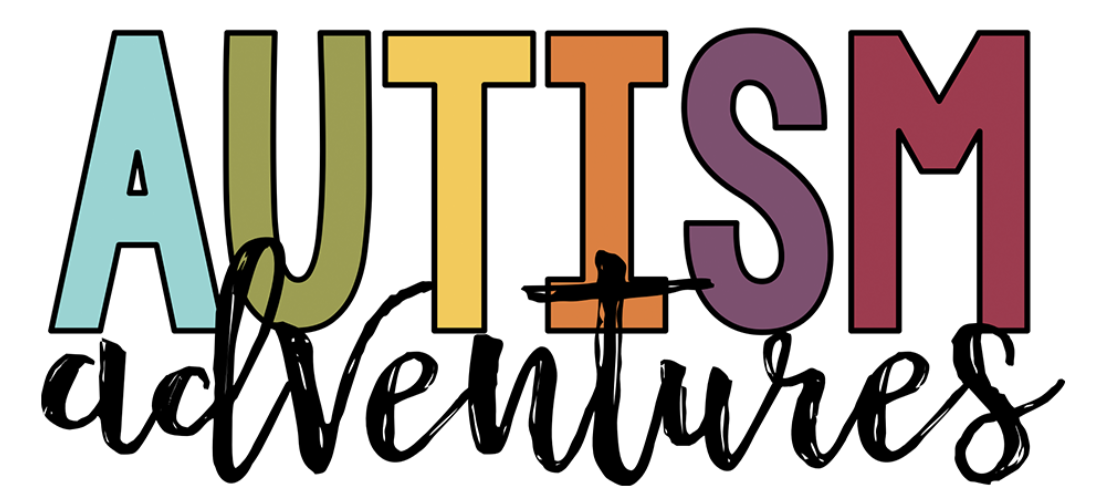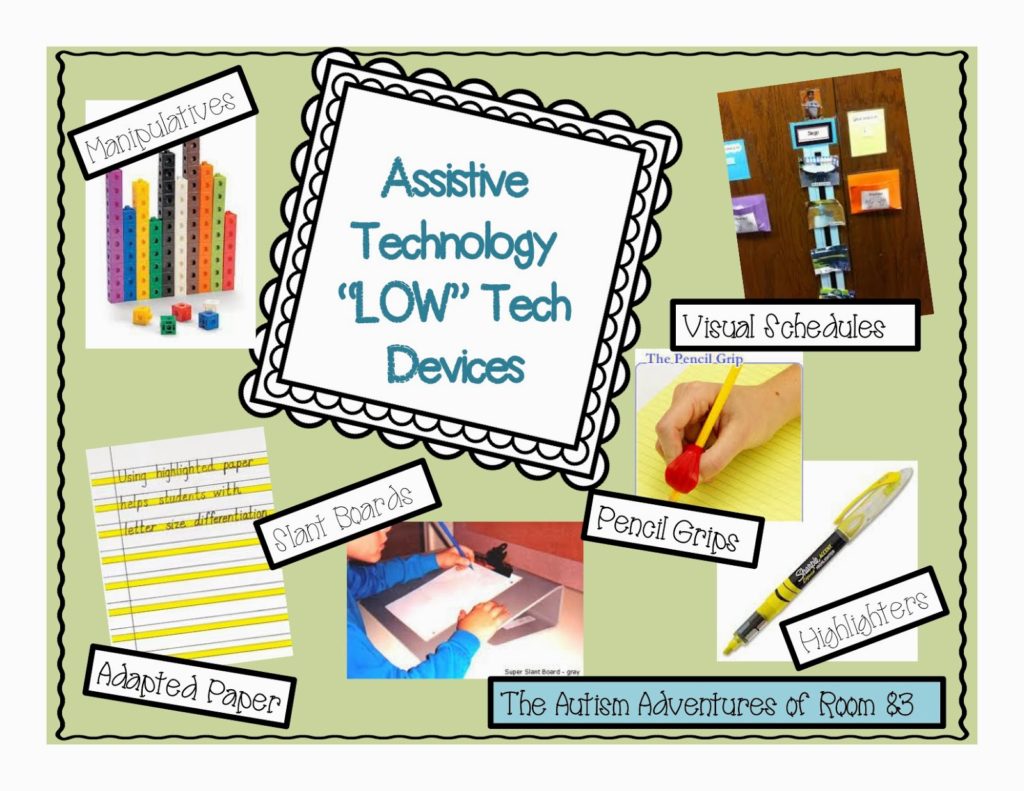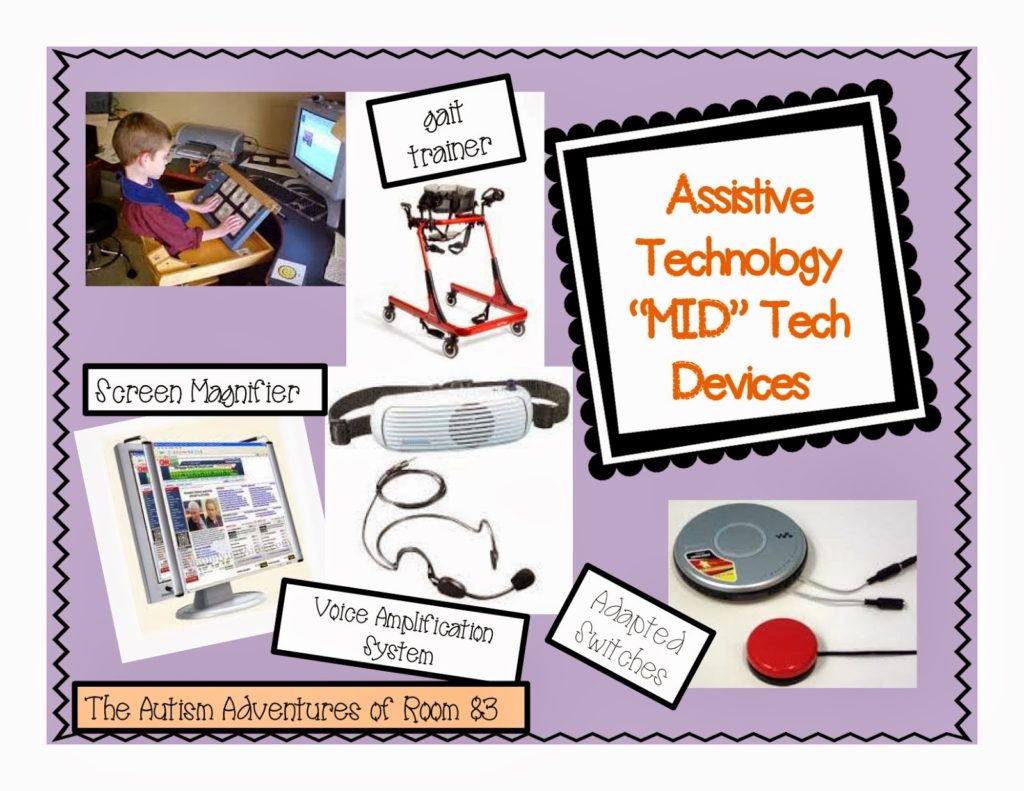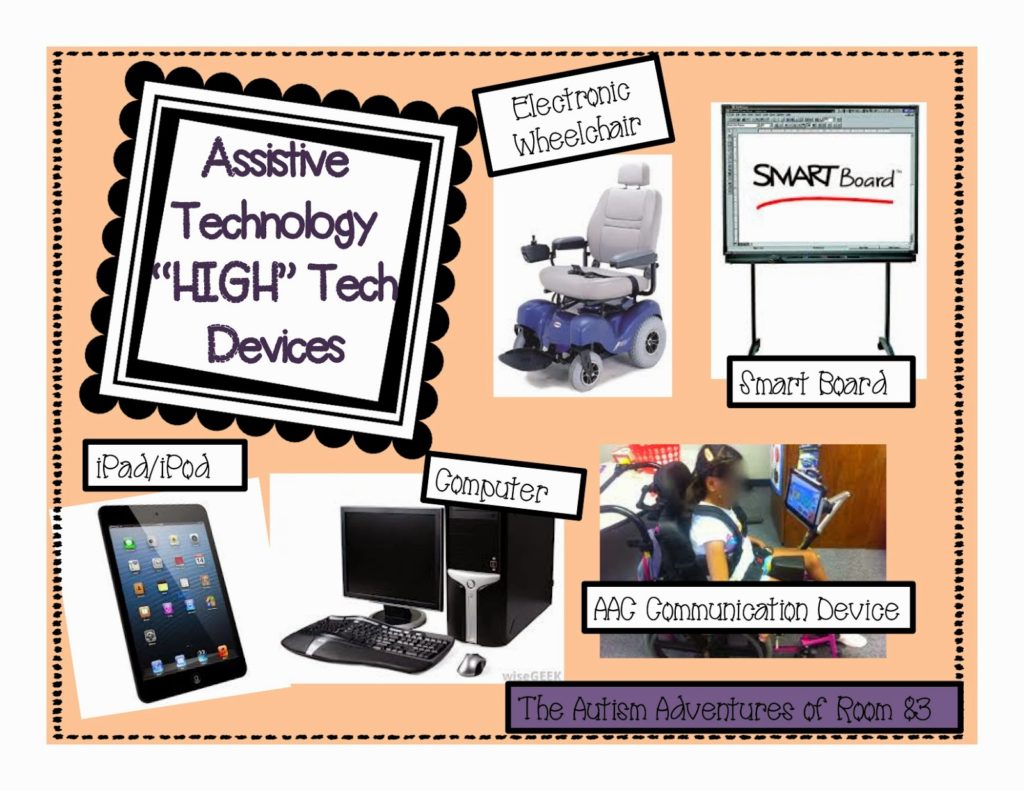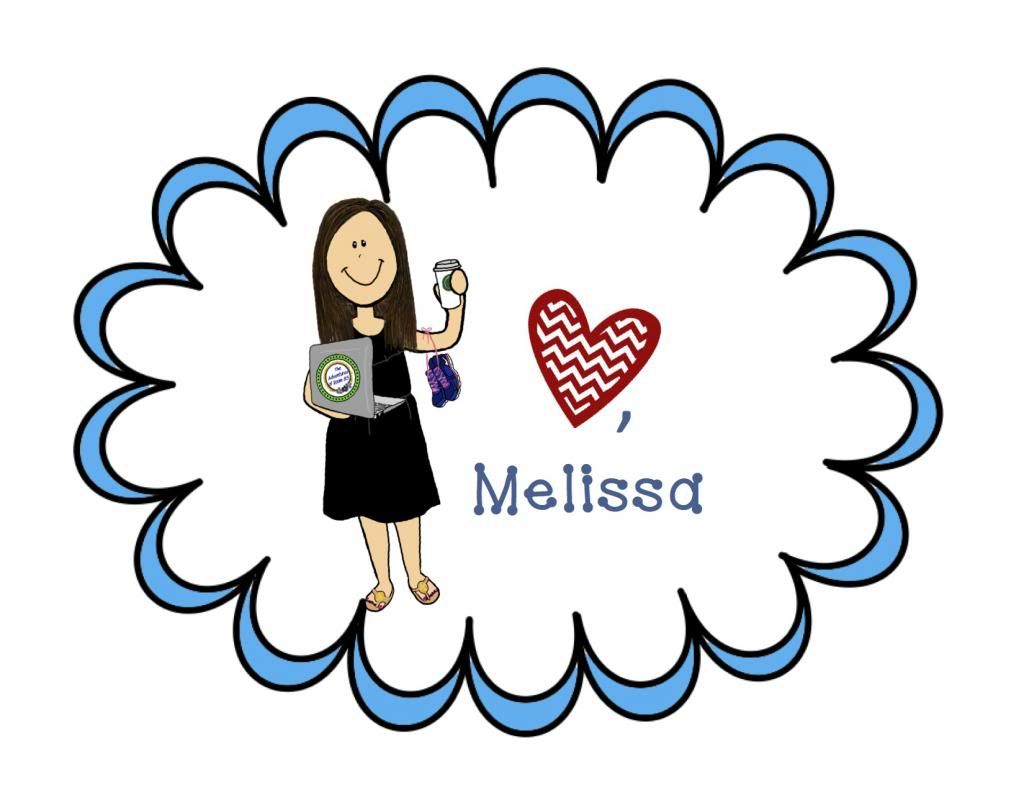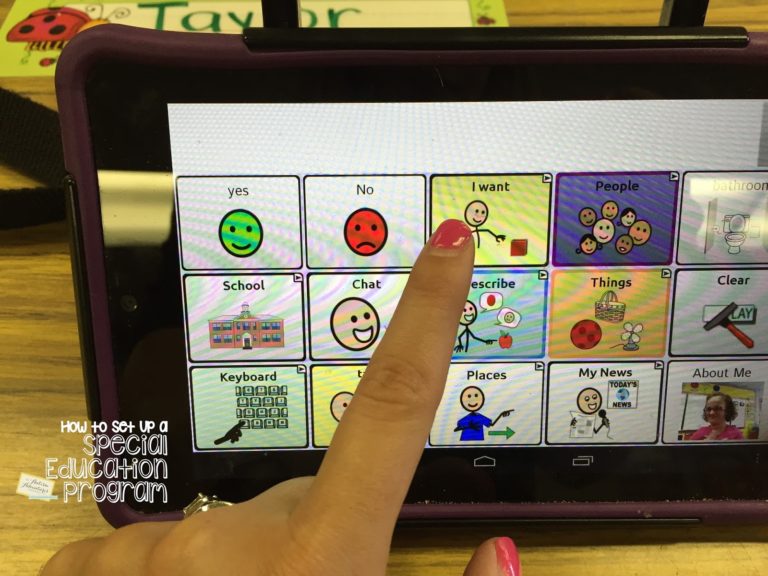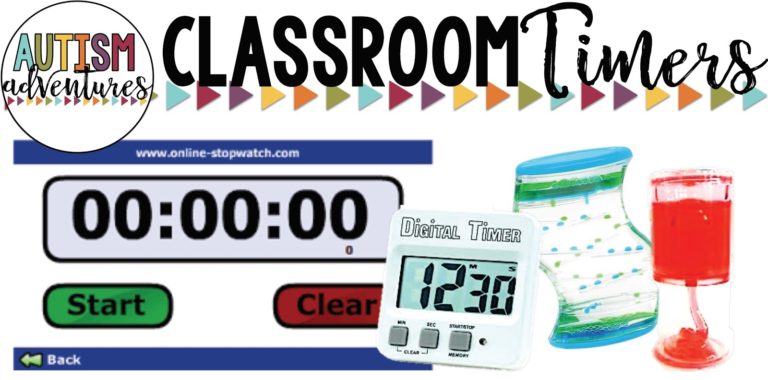Low Tech, Mid Tech and High Tech Assisstive Technology
As I mentioned yesterday, assistive technology is anything/anyone that helps a student make progress. There are three types of assistive technology. Low Tech Assistive Technology is the most common form of assistive technology. Most of these are present in most classrooms and we are unaware that we even provide these accommodations.
Low Tech Examples:
- Graphic Organizer
- Visual Schedules
- Adapted Pencil (weighted, fat, skinny, triangular, golf etc.)
- Adaptive Paper (graph, special spacing or texture, HWT etc.)
- Pencil Grip
- adapted eraser
- Slant board
- post-it’s
- highlighter
- squishy ball or sensory input (fidgets)
- tactile ruler
- velcro
- page protector or colored transparency
- binder clip (for grip for turning pages)
- jumbo anything (text, materials, paper, etc)
- manipulatives
The second type of assistive technology is mid tech assistive technology. This is the least common form of technology. As technology continues to grow, we are seeing less and less of the mid tech’s being implemented in the classroom. Here are a few examples of common mid tech resources.
Mid Tech examples:
- electrical device
- screen magnifier
- audio book
- adapted cd player/music player
- voice amplification
- scooter
- gait trainer
- wheel chair
- braille translation software
- switch adapted games or toys
- adapted switches
- adapted seating (bouncy ball, chairs with seat belts, wiggly butt cushions)
- adapted keyboard
- calculator
- electronic speller or dictionary
- word prediction software
The third and final form of assistive technology is high tech assistive technology. This is what we consider to the the kind we “plug in.” This is the most intense and expensive form of technology.
High Tech:
- computer
- electronic tablet (iPad, iPod, Kindle, Samsung tablet etc.)
- electric wheelchair
- portable word processor
- text to speech
- speech to text
- AAC Device
- smart board
- alerting device
